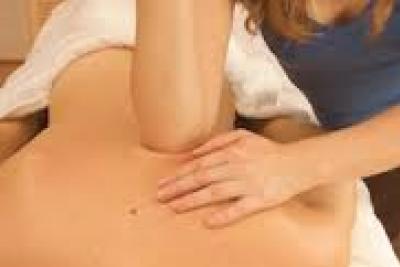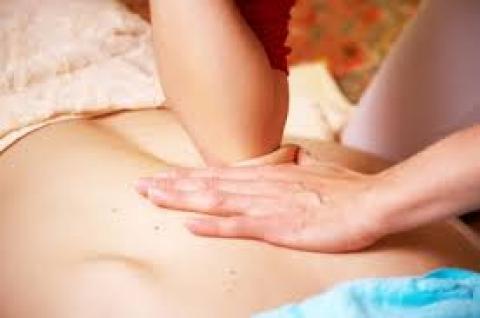Deep Tissue Sports Massage
Sports massage is a deep tissue massage based on Swedish techniques that use the application of pressure to manipulate soft tissue. Sports massage incorporates all of these Swedish massage movements, together with additional intensive techniques that are specifically designed to prevent and treat sports injuries.

Deep Tissue Sports Massage
Sports massage is a deep tissue massage based on Swedish techniques that use the application of pressure to manipulate soft tissue. Sports massage incorporates all of these Swedish massage movements, together with additional intensive techniques that are specifically designed to prevent and treat sports injuries.
Sports massage aims to improve the suppleness and flexibility of muscles and joints, improve blood circulation, speed up the healing of damaged or stressed muscles, tissues and joints, and prevent future muscle and tendon injuries.
The treatment time depends on the purpose of the treatment. For example, for a particular injury on one body part it can last 30-45 minutes. For more than one body part or a general full body sports massage it can last for 1 hour to 90minutes.
The main benefits of having a sports massage is to improve muscle flexibility, blood circulation and reduce swelling, aid the prevention of sports injuries and assists the body with recovery and repair after sports injuries have been sustained.

Sports massage can
- Maintain the body generally in better condition.
- Prevent injuries and loss of mobility.
- Cure and restore mobility to injured muscle tissue.
- Boost performance.
- Extend the overall life of your sporting career.
Physical effects of massage are:
The stroking movements in massage suck fluid through blood vessels and lymph vessels. By increasing the pressure in front of the stroke, a vacuum is created behind. This is especially important in tight or damaged muscle tissue as a tight muscle will squeeze blood out like a sponge, depriving the tissues of vital nutrients and energy to repair.
Deep massage causes the pores in tissue membranes to open, enabling fluids and nutrients to pass through. This helps remove waste products such as lactic acid and encourage the muscles to take up oxygen and nutrients which help them recover quicker.
Stretching – Massage can stretch tissues that could not be stretched in the usual methods. Bundles of muscle fibres are stretched lengthwise as well as sideways. Massage can also stretch the sheath or fascia that surrounds the muscle, so releasing any tension or pressure build up.
Break down scar tissue – Scar tissue is the result of previous injuries or trauma and can affect muscle, tendons and ligaments. This can lead to inflexible tissues that are prone to injury and pain.
Improve tissue elasticity – Hard training can make tissues hard and inelastic. This is one reason why hard training may not result in improvements. Massage helps reverse this by stretching the tissues.
Massage does increase blood flow to tissues, but so does exercise. What massage also does is open or dilate the blood vessels and by stretching them this enables nutrients to pass through more easily.
The stroking movements in massage suck fluid through blood vessels and lymph vessels. By increasing the pressure in front of the stroke, a vacuum is created behind. This is especially important in tight or damaged muscle tissue as a tight muscle will squeeze blood out like a sponge, depriving the tissues of vital nutrients and energy to repair.
Deep massage causes the pores in tissue membranes to open, enabling fluids and nutrients to pass through. This helps remove waste products such as lactic acid and encourage the muscles to take up oxygen and nutrients which help them recover quicker.
Stretching – Massage can stretch tissues that could not be stretched in the usual methods. Bundles of muscle fibres are stretched lengthwise as well as sideways. Massage can also stretch the sheath or fascia that surrounds the muscle, so releasing any tension or pressure build up.
Break down scar tissue – Scar tissue is the result of previous injuries or trauma and can affect muscle, tendons and ligaments. This can lead to inflexible tissues that are prone to injury and pain.
Improve tissue elasticity – Hard training can make tissues hard and inelastic. This is one reason why hard training may not result in improvements. Massage helps reverse this by stretching the tissues.
Massage does increase blood flow to tissues, but so does exercise. What massage also does is open or dilate the blood vessels and by stretching them this enables nutrients to pass through more easily.

Physiological effects of sports massage are:
Pain reduction – Tension and waste products in muscles can often cause pain. Massage helps reduce this in many ways including releasing the bodies endorphins.
Relaxation – Muscles relax through heat generated, circulation and stretching. Mechanoreceptors which sense touch, pressure, tissue length and warmth are stimulated causing a reflex relaxation.
If you are injured, or in pain, massage, aromatherapy oils and reflexology can allow you to recover faster. (also after exercise) This may improve your performance, prevent injury or speed up your recovery from injury, and may avert any recurrence.
Price List
| Duration | Price |
|---|---|
| 30 Minutes | £30 |
| 45 Minutes | £45 |
| 60 Minutes | £55 |
| 75 Minutes | £65 |
| 90 Minutes | £80 |
| Home Treatment Add | £5 |
